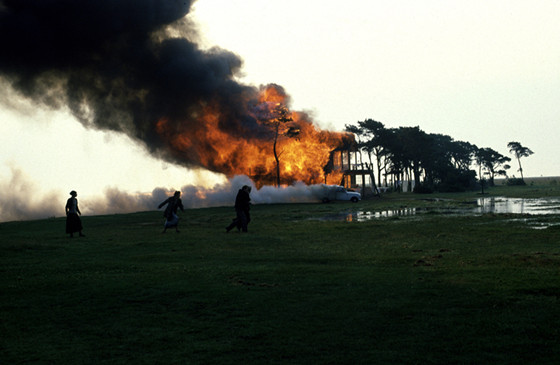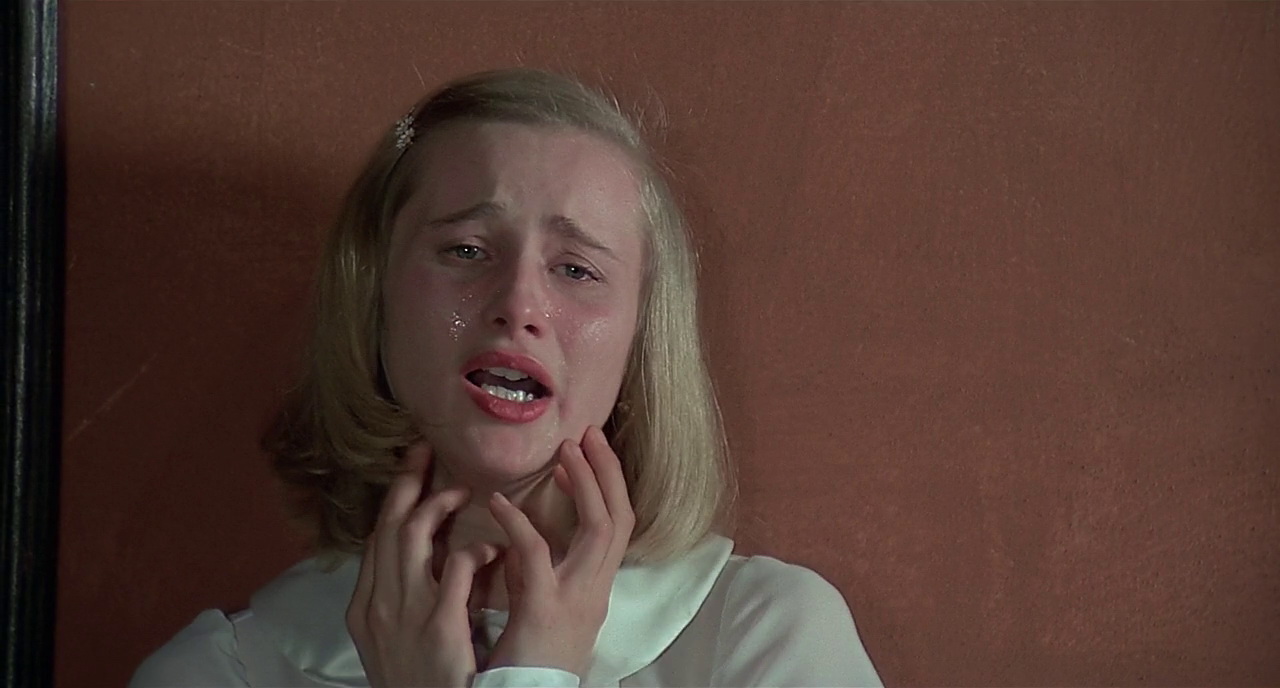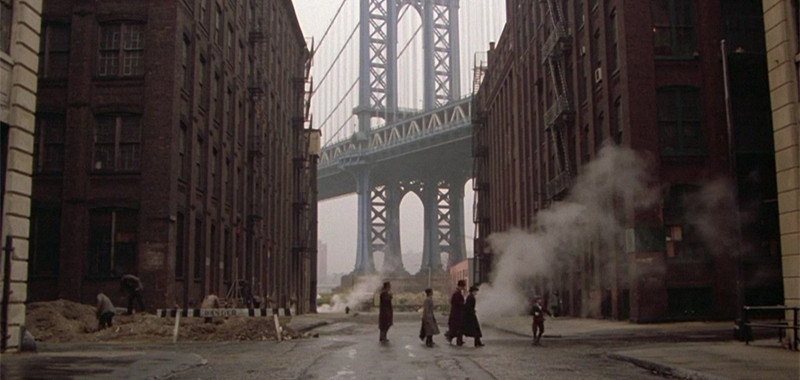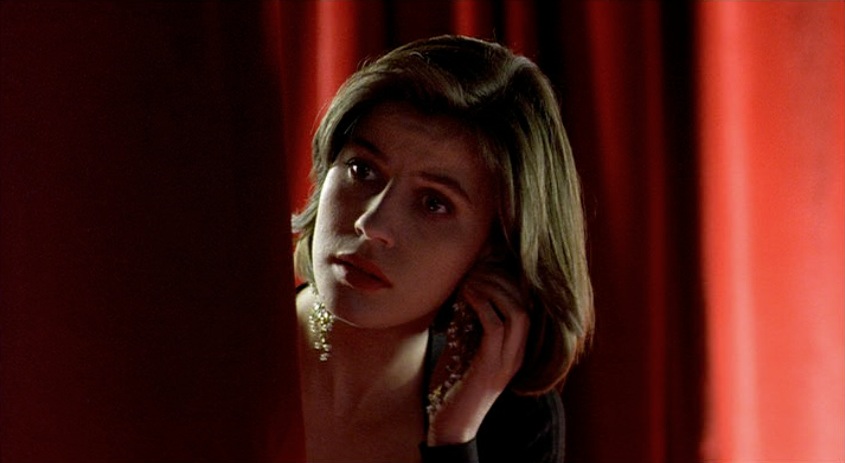5. Derek Jarman: Blue (1993)

With acclaimed films like “Sebastiane” (1976), “Caravaggio” (1986), “The Last of England” (1988) and “Edward II” (1991) in his career, Derek Jarman is without a doubt among the best English filmmakers of the 20th century.
With an unique approach on colors and always having an open dialogue with theatre in his movies, Jarman uses an impressive mise-en-scène, using all the visual aspects available to compose his narratives, something that can be seen in all of his most acclaimed works. And exactly this masterful use of visual elements that makes “Blue”, Jarman’s last film, a movie so special.
Released a few months before his death from AIDS-related complications, “Blue” consists of a single shot of blue colour filling the whole screen as the soundtrack, and the narrations approach the vision and the life of Derek Jarman.
In its 79 minutes, we explore the blue colour as deeply as he explored all the complex visual elements in his previous films. This is a movie about the brilliant artist that was Derek Jarman that unquestionably is among the greatest final films in history.
4. Andrei Tarkovsky: Sacrifice (1986)

One of the most brilliant and acclaimed filmmakers in history, Andrei Tarkovsky directed seven feature films in his career. The first six of them are masterpieces. And in the case of the last one, it could not be any different.
His filmography features “Ivan’s Childhood” (1962), “Andrei Rublev” (1966), “Solaris” (1972), “Mirror” (1975), “Stalker” (1979), “Nostalghia” (1983) and the last one, “Sacrifice” (1986). In one way or another, Tarkovsky was always able to improve himself as a filmmaker and bring themes and visual approaches so unique to his stories that it is difficult to put into words.
In his last feature film, Tarkovsky tells the story of Alexander (Erland Josephson), a journalist who bargains with God in order to prevent a nuclear holocaust and World War III. With very long shots and brilliant cinematography by Sven Nykvist (who collaborated with Ingmar Bergman on many of his acclaimed films), “Sacrifice” is the last present and cinematic lesson left by Tarkovsky that should definitely be watched by any cinephile, and truly deserves a place among the best final movies in history.
3. Pier Paolo Pasolini: Salò, or the 120 Days of Sodom (1975)

Based on the book “The 120 Days of Sodom” written by Marquis de Sade, “Salò, or the 120 Days of Sodom” was the last film in the career of Pier Paolo Pasolini, the acclaimed italian writer and director who was murdered shortly before the release of this film.
Following the story of four corrupt Italian libertines in the fascist Republic of Salò who kidnapped 18 teenagers, who will face four months of violence, this controversial masterpiece was banned in many countries by the time of its release.
Considered one of the most violent films in history, “Salò, or the 120 Days of Sodom” is undoubtedly one of the best works in the career of Pasolini, among movies like “Theorem” (1968) and “The Gospel According to St. Matthew” (1964), and definitely deserves a place on this list.
2. Sergio Leone: Once Upon a Time in America (1984)

This 229-minute long masterpiece is probably the best film from the 80s. Directed by Sergio Leone, one of the most acclaimed directors from the 20th century, “Once Upon a Time in America” (1984) explores crime, friendship and betrayal in this epic tale of a group of Jewish gangsters who grow together in crime.
In the majority of its running time, “Once Upon a Time in America” plays with flashbacks and points of view to build a complex narrative around the relationship between the characters. With amazing performances by Robert De Niro and James Woods, allied with a brilliant score by Ennio Morricone, this movie deserves a place side by side with acclaimed gangster films like “The Godfather” (1972, directed by Francis Ford Coppola) and “Goodfellas” (1990, directed by Martin Scorsese).
Taking its time to develop the characters properly and to situate the audience while jumping back and forth in time is one the greatest accomplishments in this film. Alternating the storylines makes this narrative even more compelling and it is incredible how poetically Leone conducts some scenes of this film, even in the middle of many abominable and violent situations.
Being the last film from a director responsible for “A Fistful of Dollars” (1964), “The Good, the Bad and the Ugly” (1966) and “Once Upon a Time in the West” (1968), “Once Upon a Time in America” is further proof of Leone’s exceptional vision and is not only among the best final films in cinema history, but is among the greatest movies ever made.
1. Krzysztof Kieslowski: The Three Colors Trilogy (1993 – 1994)

One of the greatest filmmakers in the history of Poland, Krzysztof Kieslowski’s works include acclaimed movies such as “The Double Life of Veronique” (1991), “Camera Buff” (1979) and “A Short Film About Love” (1988), among many works for television including “Dekalog” (1988), one of the greatest TV series ever made.
In 1993 and 1994, Kieslowski released one of the greatest film trilogies in history, “The Three Colors”, based on the colors of the French flag that represent Liberty (Blue), Equality (White) and Fraternity (Red).
“Blue” (1993) follows the story of Julie (Juliette Binoche), a woman who loses her young daughter and husband in a car accident, and who needs to start a new life after this tragedy; “White” (1994) follows Karol (Zbigniew Zamachowski), a Polish man who moves to Paris after marrying Dominique (Julie Delpy), a French woman who divorces him not long after they marry, and after that, he develops a revengeful plan against his ex-wife; “Red” (1994) follows Valentine (Irène Jacob), a model who lives in Geneva, who meets a retired judge who spies the phone calls of his neighbours, and develops a relationship with him.
Connecting the stories of the three films, “The Three Colors Trilogy” has one of the most existential and humanistic approach on past, present, future, loss, friendship, love, hate and life seen on the silver screen. Kieslowski once again shows his subtle and poetic approach on such complex matters and ends his career with this three unique pieces that should definitely be watched and rewatched by any cinephile.
Honorable Mentions:
– Andrzej Wajda: Afterimage (2016)
– Akira Kurosawa: Madadayo (1993)
– John Huston: The Dead (1987)
– David Lean: A Passage to India (1984)
Author bio: Vítor Guima is a filmmaker, writer and musician from São Paulo, Brazil. Every day he watches a movie, reads a few pages from a book, listens to an album and freaks out with the feeling of not having enough time to see everything. You can follow him on Instagram on @ovitorguima.